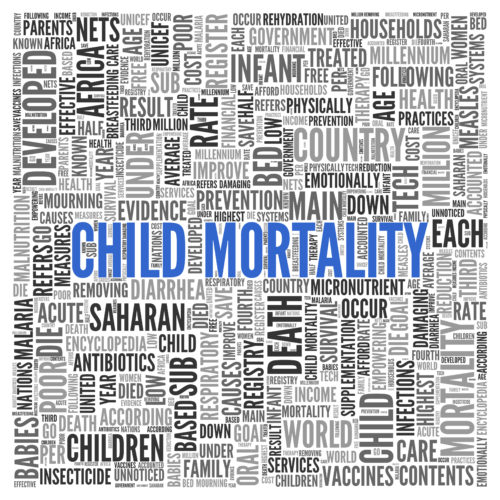Outrage of the Month: Child Mortality in the U.S. Exceeds 19 Other Wealthy Nations
Health Letter, February 2018
By Michael Carome, M.D.

If you’re not outraged,
you’re not paying attention!
Read what Public Citizen has to say about the biggest blunders and outrageous offenses in the world of public health, published monthly in Health Letter.

According to a troubling new study published last month in the medical journal Health Affairs, since the 1990s, the U.S. — which is the wealthiest nation on earth, and spends more per capita on health care than any other nation — has ranked last in child mortality rates among 20 developed nations. These findings indicate serious, chronic systemic failures in protecting our nation’s most vulnerable citizens from preventable fatal injuries and illness.
For the Health Affairs study, researchers examined mortality rates among children ages 0 to 19 for the 50-year period from 1961 to 2010 for the U.S. and the following 19 other developed nations in the Organization for Economic Cooperation and Development (OECD): Australia, Austria, Belgium, Canada, Denmark, Finland, France, Germany, Iceland, Ireland, Italy, Japan, the Netherlands, New Zealand, Norway, Spain, Sweden, Switzerland and the United Kingdom. (Four other OECD countries — Greece, Luxembourg, Portugal and Turkey — were excluded from the study because of inadequate data on child mortality.) Member nations of the OECD are considered to have similar levels of economic development and political structure.
The researchers found that from 1961 to 2010, the childhood mortality rates in the U.S. and in the other 19 OECD nations combined steadily declined. However, although the mortality rates for children did not differ significantly between the U.S. and the other OECD nations in the 1960s, the U.S. mortality rates became significantly higher than the rates for the other OECD nations starting in the 1970s for children ages 1 to 19 and starting in the 1980s for infants (children under age 1).
Moreover, the gap in childhood mortality rates between the U.S. and the other OECD nations has gradually widened over time: Compared with the other OECD nations, the U.S. mortality rate for infants was 29 percent greater in the 1980s, 49 percent greater in the 1990s, and 76 percent greater in the 2000s. Likewise, the mortality rate for children age 1 to 19 was 29 percent greater in the 1980s, 44 percent greater in the 1990s, and 55 percent greater in the 2000s.
The researchers estimated that if the U.S. had achieved just the average childhood mortality of the other 19 OECD nations over the 50-year study period, more than 600,000 children’s deaths could have been avoided.
In an analysis of specific causes of child mortality for the period from 2001 to 2010, the researchers found that the two leading causes of infant death in the U.S. were extreme prematurity and sudden infant death syndrome (SIDS). The U.S. death rates from extreme prematurity and SIDS were three times and two times greater, respectively, than the rates in other OECD nations.
For the subgroup of children in adolescence (age 15 to 19), the two leading causes of death in the U.S. for the same period were motor vehicle accidents and firearm assaults. Most disturbingly, a child aged 15 to 19 was eighty-two times more likely to die from gun homicide in the U.S. than in other wealthy nations.
In discussing their results, the researchers highlighted several factors that are contributing to the U.S.’s poor performance on child mortality, including persistently high poverty rates, poor educational outcomes and a relatively weak social safety net. But against this backdrop, the Trump administration and Republicans in Congress are aggressively pushing an agenda that will further exacerbate these conditions.
The shameful child mortality rates in the U.S. relative to other wealthy nations documented in the Health Affairs study should serve as a wake-up call for U.S. policy makers, public health agencies, health care professionals and child health advocates. As the researchers conclude, “the findings should motivate Americans to do everything possible to improve the medical and social conditions of children that are responsible for these preventable deaths.” Children in the U.S. deserve no less.